The name of this Italian hill town in Tuscany, Montalcino, is derived from the Latin “Mons Ilcinnus,” or mountain of holm oak and it is the oak tree that appears on the commune’s logo.
In the Middle Ages (5th – 15 century), the area was dotted with tanneries used for shoes and leather goods. Today the area is covered with olive orchards, vineyards, fields and villages that have not changed since the beginning of time. This charming hill town is located 68.35 miles from Florence, and 93.2 miles from Pisa.
Perfect for Grapes
This ecologically desirable location is awash in water and surround by the Ombrone, Asso, Arbia and Orcia Rivers. To the south is mount Amiata that protects the Brunello territory from cloudbursts and hailstorms. The climate is Mediterranean with rain in the spring and late autumn and an occasional snow flurry in the winter. Rarely does the area experience fog, chilly weather or late frosts. During the growing period the vine climate is usually mild – making for very happy grapes.

Sangiovese (blood of Jove) is an ancient varietal that dates back to the Etruscans. It is a popular Italian grape throughout Italy but it presents a serious challenge to winemakers as it yields high quality results only in areas that are ideally suited to it. It is a high-acid grape with moderate to high tannins, apparent earthiness and subtle fruit. It is called Brunello because of the dark color of its skin (almost brown berry) at harvest. It is the only varietal allowed by the wine production regulations.
In the second half of the 19th century many vineyards were eliminated by Phylloxera. Thanks to the foresight of Ferruccio Biondi (1865-1870), a young, former member of the military (he fought with Garibaldi), who returned from the war determined to reclaim the family estate by replanting the fields with 100 percent Sangiovese Grosso of the Brunello variety (without blending it was minor percentages of white grapes in the Chianti style of the time). This led to Italy’s first quality revolution in winemaking (approximatey 100 years before the DOC appellations).
The four wines produced in Montalcino with the Protected Designation of Origin include Brunello di Montalcino DOCG, Rosso di Montalcino DOC, Moscadello di Montalcino DOC and Sant’Antimo DOC.
The Brunello rules were established in 1998 and dictate that to be considered Brunello the wine has to be aged in oak for a minimum of 2 years (some producers select large Slavonian oak casks that impart an oak flavor, others prefer French barrique which delivers a vanilla oak flavor and or small barrique barrel aging) and spend at least 4 months in the bottle before release. The wine must have an extended maceration period (where the color and flavor are extracted from the skins). Rule breakers receive a conviction of commercial fraud and imprisonment for up to 6 years.
History
The area has been producing fine red wines since the 15th century; however, the formula for Brunello was “invented” in 1888 by Ferruccio Biondi Santi, who decided to delete the grapes used in the traditional Chianti recipe, such as Canaiolo and Colorino, and use only Sangiovese.
At the end of WWII, Brunello di Montalcino was considered one of Italy’s best wines. The only commercial producer at the time, Biondi-Santi, had four vintages (1888, 1891, 1925, and 1945). Others wanted the same prestige and by the 1960s there were 11 producers making Brunello. In 1968 the region was granted DOC status. By 1970 there were 25 producers and by 1980 – the number increased to 53 producers. In 1980 this region was the first Italian wine region to be awarded DOCG designation.
The Mariani family from Long Island, NY are the largest producers of Brunello di Montalcino. In 1978 they started Castello Banfi in the southern part of Montalcino zone. Today this organization is noted for research into the grapes and terroirs of Montalcino.
Brunello wines tend to be intensely tannic and demand aging (up to 20 years) when traditionally made and aerated for several hours before serving.

Consortium of Brunello of Montalcino Wine
At a recent Manhattan wine tasting event coordinated by the Consortium I had the good fortune to taste a few excellent wines from this region of Italy. The consortium was started in 1967 at the same time the area received a DOC designation.

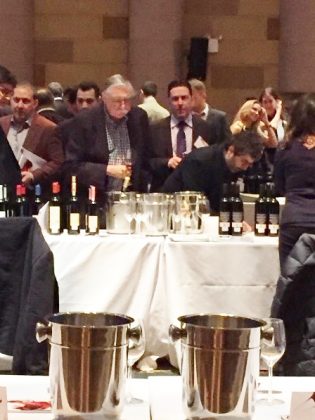


Curated Wines
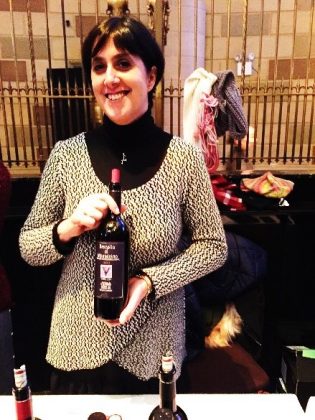

• 1. My absolute favorite wine: Verbena. Brunello di Montalcino DOCG Riserva 2011. 100 percent Sangiovese. Malolactic fermentation in barriques, two years in oak vats followed by one year in the bottle.
To the eye – plush dark mahogany velvet; to the nose – lots of cherries, strawberries, raisins and dried apricots with just a hint of sweetness from the scent of young roses. On the palate a complex mix of flavors that suggests cherries and warm stewed plums intertwined with leather and tobacco. The tannins are soft and the oaky finish is strong but pleasant. Pair with tuna tartare or tuna steak, cheddar and Gouda cheese with guava, fried chicken livers, or slow roasted pork.
2. VIS. La Togata. Burnello di Montalcino DOCG 2011. 100 percent Sangiovese.


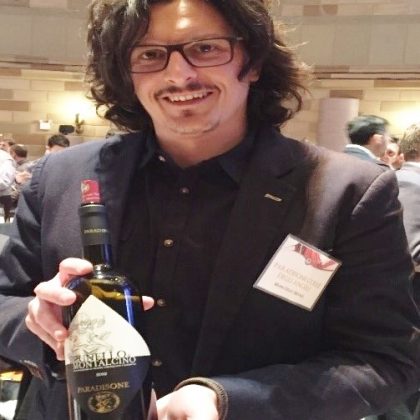
La Togata is made by Tenuta Carlina and owned by Danilo Talbot and Jeanneth Angel since 1990. This small estate is near the Argiano castle in the southern sector. The wine is aged in small French oak barrels for approximately 6 months, then in Slovenian oak barrels for 24 months. The wines are consistently rich and round with a “rough” style. Awards: International Wine Challenge, 2016: Gold; International Wine & Spirit Competition, 2015: Gold.
To the eye a deep purple velvet; to the nose – spicy and smoky with a bit of perfume from leather, anise, black cherries, blood oranges and peach tea. The palate detects assertive tannins that lead to a long delicious finish. Pair with Italian seafood, osso bocco, lasagna, and eggplant Parmesan.
3. Villa Poggio Salvi. Brunello di Montalcino DOCG Riserva 2011. 100 percent Sangiovese.
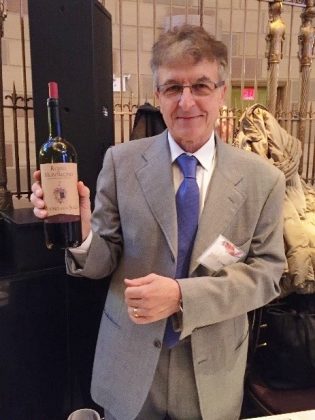

The winery is located on the south side of Montalcino where the grapes enjoy a combination of clay and Tyrrhenian Sea breezes – making perfect terroir. The estate has been owned and operated by Pierluigi Tagliabue since 1979. Noted for judicious farming, and minimal intervention in the winery, the wines are aged in large Slovenian oak casks. Tagliabue’s grandson, Luca Belingardi, is in charge of winemaking.
Dusty red trending to palest pink to the eye. To the nose, an aroma of old red roses and overripe strawberries, herbs and mineral tones, with a bit of bog and smog. On the palate –lush sour cherries. Pair with beef or venison.
4. Paradisone Colle Degli Angeli. Brunello di Montalcino DOCG 2012. 100 percent Sangiovese. The wine producer is located in the province of Siena.

Today the winery is owned by Attilio Locati and Federico Donini is the consultant oenologist. Locati has stated, “The joys of tasting are not only physical but spiritual: the closeness to nature we feel when making or tasting wine allows us to reach total well-being and harmony.”
To the eye, a hue of old purple velvet that drifts into a rust tone. To the nose, a scent of old red roses. The palate finds very sour cherries and aging strawberries, dried fruit, plums and cedar that delivers lots of tannins leading to a long cherry finish. Drink now. Pair with a hearty beef stew.
5. Capanna. Brunello di Montalcino DOCG 2012. 100 percent Sangiovese.
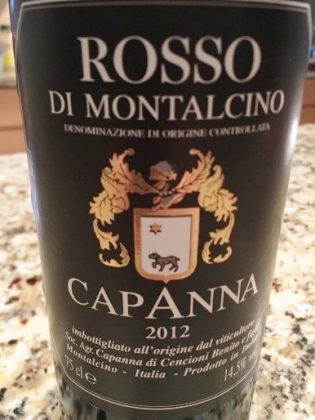
The Capanna farm has been under the leadership of the Cencioni family since 1957. It is located to the north of Montalcino in the area of Montosoli. This winery is considered to be one of the best Brunello “crus” as the enologist is Paolo Bagaggini. Grapes are hand harvested in order to select the grape bunches that are best suited to each kind of wine. Brunello di Montalcino comes from this selection.
Aged four years in Slovenian oak casks and for the Brunello chosen to become Riserva the aging process in increased to five years. Due to its long aging and the care and attention afforded to its production, Brunello is now considered to be one of the most precious and exclusive wines.
To the eye, very dark reddish-purple aged velvet. To the nose old cherries and dried red berries, as well as juniper. To the palate, strawberries, juniper berries and cherries leading to a dry finish. Pair with game, roast meats as well as Tuscan mushroom risotto and mushroom pizza.
6. San Polo. Brunello di Montalcino DOCG 2012. 100 percent Sangiovese.
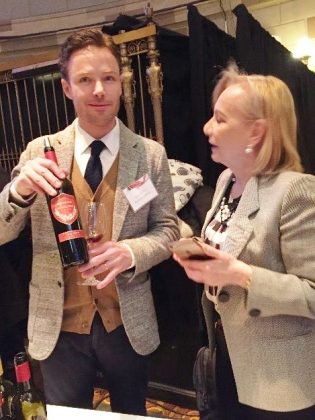
The winery minimizes the use of chemicals and fungicides. Only natural fertilizers in the form of organic compost is used and harvesting is done manually when the grapes are fully mature. The number of buds is restricted as high plant density and minimum amount of fertilization allows the veins to achieve the right balance between fruit and foliage with higher concentrations of sugar, polyphenols and aromatic substances. When necessary, manual thinning of the clusters is scheduled to favor the clusters with better exposure to the sun. The wine is fermented in concrete tanks for 20-22 days; aged 24 months in new, medium toasted French oak tonneaux plus lengthy bottle ageing before release to the market.
To the eye, rusty brown to bronze; the nose detects violets, sour cherries and a forest after a rain storm. There is a hint of strawberries and delicious dry fruit on the palate with a long complex finish. Pair with burgers and fries, red meats and game accompanied by mushrooms and truffles. Ideal with matured cheese such as Parmigiano Reggiano and Tuscan pecorino.
This copyright article, including photos, may not be reproduced without written permission from the author.




Leave a Comment